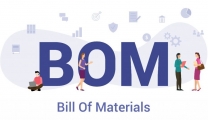1. What is material consumption management?
The main goal of material wastage management is to ensure that materials are used efficiently, economically and can be reused when needed.
2. How important is raw material consumption norms?
Material consumption norms are an important aspect of material consumption management and have a positive impact on many other aspects of business operations:
- Improve cost efficiency: Material consumption norms help determine the level needed for each unit of product or service, thereby helping to control and minimize waste. Using raw materials efficiently can help save on production and operating costs.
- Optimize resource use: Through streamlined processes and effective inventory management , companies can maximize resource use, reduce waste, and improve productivity.
- Environmental protection: Using raw materials in a proportionate and reasonable manner helps reduce the amount of natural resources consumed and reduce negative impacts on the environment. This contributes to maintaining and improving the sustainability of the living environment.
- Increase customer satisfaction: Raw material consumption norms along with product quality can affect customer satisfaction. Products that meet quality requirements and are produced sustainably can build trust and strengthen relationships with customers.
- Maintain competitiveness: Effective management of raw material consumption helps enhance business competitiveness by reducing production costs, improving product quality and meeting market requirements.
Strategy for optimal consumption of raw materials in production
Accurate demand forecast
Forecasting production demand is an important step in determining required raw material levels. Based on historical data and market information, accurate forecasting will help you predict how much and when raw materials will be needed. This helps avoid shortages or surpluses of raw materials.
Practice lean production
Lean manufacturing is a production management method that aims to reduce waste in all aspects. By optimizing the production process, eliminating unnecessary steps and increasing efficiency, you can reduce the consumption of raw materials and optimize their utilization.
Quality control and error prevention
Quality control is important to ensure that products meet the desired quality and do not cause waste. Defective products may consume more materials for remanufacturing or repair. By focusing on quality control and error prevention, you can save on materials and optimize production efficiency.
Effective supplier management
Choosing reliable suppliers and establishing good relationships with them is an important factor. Ensuring that you receive quality materials on time will help avoid shortages and minimize the friction of restocking materials.
Training and connecting employees
Training employees on the efficient and economical use of materials can help improve their awareness of the importance of material consumption management. Connections between departments within the organization, such as purchasing, production and inventory management, are also important to ensure information related to material consumption is shared accurately. accurate and quick.
Challenges in managing raw material consumption norms
Measurement and Monitoring
Carefully measuring and tracking material loss can become complex, especially in large-scale manufacturing environments. Constant variations in the manufacturing process, the possibility of human error, and imperfect data collection can make it difficult to accurately determine the amount of material wasted.
Root cause analysis
A comprehensive understanding of the manufacturing process is required to be able to identify the root causes of material waste. Figuring out whether material losses stem from inefficient operations, processing inaccuracies, or equipment problems is an important step in effectively solving the problem.
Resource allocation
Creating a balance in resource allocation to reduce material waste and at the same time ensure production targets are met is a notable challenge. Using excess resources to prevent waste can cause overproduction problems, which can add to unnecessary material wastage.
Cost effective solutions
Implementing strategies to limit material use, such as investing in advanced equipment or optimizing processes, will likely require some initial funding. Ensuring the cost-effectiveness of these solutions and convincing all stakeholders of their sustainability benefits can be difficult.
Cooperate with suppliers
Not only done internally, businesses need to cooperate with suppliers to manage material consumption norms .













Replies to This Discussion